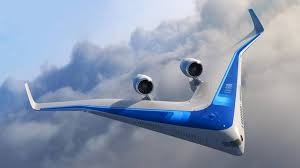
Breaking News
 2 Hours of Retro Sci-Fi Christmas Songs | Atomic-Age Christmas at a Snowy Ski Resort
2 Hours of Retro Sci-Fi Christmas Songs | Atomic-Age Christmas at a Snowy Ski Resort
 Alternative Ways to Buy Farmland
Alternative Ways to Buy Farmland
 LED lights are DEVASTATING our bodies, here's why | Redacted w Clayton Morris
LED lights are DEVASTATING our bodies, here's why | Redacted w Clayton Morris
Top Tech News
 Travel gadget promises to dry and iron your clothes – totally hands-free
Travel gadget promises to dry and iron your clothes – totally hands-free
 Perfect Aircrete, Kitchen Ingredients.
Perfect Aircrete, Kitchen Ingredients.
 Futuristic pixel-raising display lets you feel what's onscreen
Futuristic pixel-raising display lets you feel what's onscreen
 Cutting-Edge Facility Generates Pure Water and Hydrogen Fuel from Seawater for Mere Pennies
Cutting-Edge Facility Generates Pure Water and Hydrogen Fuel from Seawater for Mere Pennies
 This tiny dev board is packed with features for ambitious makers
This tiny dev board is packed with features for ambitious makers
 Scientists Discover Gel to Regrow Tooth Enamel
Scientists Discover Gel to Regrow Tooth Enamel
 Vitamin C and Dandelion Root Killing Cancer Cells -- as Former CDC Director Calls for COVID-19...
Vitamin C and Dandelion Root Killing Cancer Cells -- as Former CDC Director Calls for COVID-19...
 Galactic Brain: US firm plans space-based data centers, power grid to challenge China
Galactic Brain: US firm plans space-based data centers, power grid to challenge China
 A microbial cleanup for glyphosate just earned a patent. Here's why that matters
A microbial cleanup for glyphosate just earned a patent. Here's why that matters
 Japan Breaks Internet Speed Record with 5 Million Times Faster Data Transfer
Japan Breaks Internet Speed Record with 5 Million Times Faster Data Transfer
Flying V long-distance plane makes its first flight as a scale model

Last year we caught wind of an interesting aviation concept cooked up by engineers at TU Delft, which consisted of a novel V-shaped design that promises significant efficiency gains over conventional aircraft. The project has now progressed from slick renders of a futuristic aircraft to a scale model capable of flight, which was recently shown in action for the very first time.
In its fully realized form, the Flying V aircraft would feature a cabin, cargo hold and fuel tanks integrated into its V-shaped wing structure, which would have a wingspan equal to that of an Airbus A350. This would enable the Flying V to take off and land using existing airport infrastructure, with enough space on board for the same amount of cargo and human passengers, with 314 seats in the standard configuration.
Where the Flying V would offer some performance benefits, however, is through improved aerodynamics due to its overall smaller airframe. Less mass means less resistance, which means less fuel is needed to carry the Flying V to its destination. According to the team, the reduced weight and unique shape of the Flying V could see it use 20 percent less fuel than an Airbus A350-900, the most advanced commercial aircraft in action today.

 $100 SILVER CONFIRMED?
$100 SILVER CONFIRMED?

